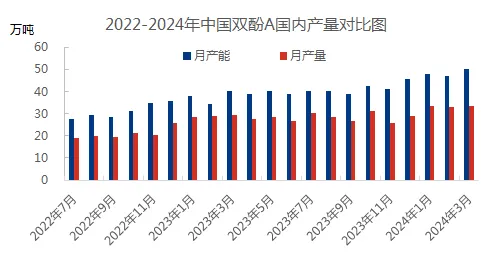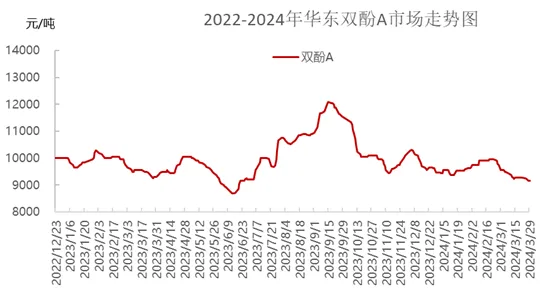M-Cresol, còn được gọi là m-methylphenol hoặc 3-methylphenol, là một hợp chất hữu cơ có công thức hóa học C7H8O. Ở nhiệt độ phòng, nó thường là chất lỏng không màu hoặc màu vàng nhạt, ít tan trong nước nhưng tan trong các dung môi như etanol, ete, natri hydroxit và có tính dễ cháy. Hợp chất này có nhiều ứng dụng trong lĩnh vực hóa chất tinh khiết.
Lĩnh vực thuốc trừ sâu: Là một chất trung gian và nguyên liệu thô của thuốc trừ sâu, m-cresol được sử dụng để sản xuất nhiều loại thuốc trừ sâu pyrethroid khác nhau, chẳng hạn như fluazuron, cypermethrin, glyphosate và dichlorophenol, bằng cách sản xuất thuốc trừ sâu m-phenoxybenzaldehyde. Trong lĩnh vực dược phẩm, m-cresol có nhiều ứng dụng và có thể được sử dụng làm nguyên liệu thô để sản xuất nhiều loại thuốc khác nhau, chẳng hạn như thuốc chống viêm, thuốc chống ung thư, v.v. Ngoài ra, m-cresol cũng có thể được sử dụng để chế tạo các thiết bị y tế và chất khử trùng. Ngành công nghiệp hóa chất tinh khiết: m-cresol có thể được sử dụng để sản xuất nhiều loại sản phẩm hóa chất tinh khiết. Ví dụ, nó có thể phản ứng với formaldehyde để tạo thành nhựa formaldehyde m-cresol, một chất trung gian quan trọng của thuốc trừ sâu và có thể được sử dụng để sản xuất thuốc diệt nấm và thuốc trừ sâu. Ngoài ra, nó cũng có thể được sử dụng để sản xuất chất chống oxy hóa, thuốc nhuộm, gia vị, v.v. Các lĩnh vực khác: m-cresol cũng có thể được sử dụng để chế tạo các vật liệu chức năng, chẳng hạn như nhựa trao đổi ion, chất hấp phụ, v.v.
1、Tổng quan về quy trình sản xuất và sự khác biệt trong nước và quốc tế
Quy trình sản xuất meta cresol chủ yếu có thể được chia thành hai loại: phương pháp chiết xuất và phương pháp tổng hợp. Phương pháp chiết xuất bao gồm việc thu hồi cresol hỗn hợp từ các sản phẩm phụ của nhựa than đá và sau đó thu được meta cresol thông qua một quy trình tách phức tạp. Các quy tắc tổng hợp bao gồm nhiều phương pháp khác nhau, chẳng hạn như thủy phân clo hóa toluen, phương pháp isopropyltoluen và phương pháp diazot hóa m-toluidine. Cốt lõi của các phương pháp này là tổng hợp cresol thông qua các phản ứng hóa học và tiếp tục tách nó để thu được m-cresol.
Hiện nay, quy trình sản xuất cresol giữa Trung Quốc và nước ngoài vẫn còn một khoảng cách đáng kể. Mặc dù quy trình sản xuất m-cresol tại Trung Quốc đã đạt được một số tiến bộ trong những năm gần đây, nhưng vẫn còn nhiều thiếu sót trong việc kiểm soát phản ứng hóa học, lựa chọn chất xúc tác cốt lõi và quản lý quy trình. Điều này dẫn đến chi phí sản xuất meta-cresol tổng hợp trong nước cao, và chất lượng khó cạnh tranh với sản phẩm nhập khẩu.
2、Những thách thức và đột phá trong công nghệ tách
Công nghệ tách đóng vai trò then chốt trong quá trình sản xuất meta cresol. Do chênh lệch nhiệt độ sôi chỉ 0,4°C và chênh lệch nhiệt độ nóng chảy là 24,6°C giữa meta cresol và para cresol, nên việc tách chúng hiệu quả bằng các phương pháp chưng cất và kết tinh thông thường là rất khó khăn. Do đó, ngành công nghiệp thường sử dụng phương pháp hấp phụ sàng phân tử và alkyl hóa để tách.
Trong phương pháp hấp phụ sàng phân tử, việc lựa chọn và chuẩn bị sàng phân tử đóng vai trò then chốt. Sàng phân tử chất lượng cao có thể hấp phụ meta cresol hiệu quả, từ đó đạt được hiệu quả tách para cresol. Đồng thời, việc phát triển các chất xúc tác mới và hiệu quả cũng là một hướng đột phá quan trọng trong công nghệ tách. Các chất xúc tác này có thể cải thiện hiệu suất tách, giảm tiêu thụ năng lượng và thúc đẩy tối ưu hóa quy trình sản xuất meta cresol.
3、Mô hình thị trường cresol toàn cầu và Trung Quốc
Quy mô sản xuất meta cresol toàn cầu vượt quá 60.000 tấn/năm, trong đó Langsheng (Đức) và Sasso (Mỹ) là hai nhà sản xuất meta cresol lớn nhất thế giới, với công suất mỗi công ty đạt 20.000 tấn/năm. Hai công ty này đang dẫn đầu ngành về quy trình sản xuất meta cresol, kiểm soát chất lượng và phát triển thị trường.
Ngược lại, số lượng doanh nghiệp sản xuất cresol ở Trung Quốc tương đối nhỏ, và tổng năng lực sản xuất cũng tương đối hạn chế. Hiện nay, các doanh nghiệp sản xuất cresol chính của Trung Quốc bao gồm Haihua Technology, Dongying Haiyuan và An Huy Shilian, với năng lực sản xuất chiếm khoảng 20% năng lực sản xuất cresol toàn cầu. Trong số đó, Haihua Technology là nhà sản xuất meta cresol lớn nhất Trung Quốc, với công suất sản xuất hàng năm khoảng 8.000 tấn. Tuy nhiên, sản lượng thực tế có thể dao động do nhiều yếu tố như nguồn cung nguyên liệu và nhu cầu thị trường.
4、Tình hình cung cầu và sự phụ thuộc vào nhập khẩu
Tình hình cung cầu thị trường cresol tại Trung Quốc có những biến động nhất định. Mặc dù sản lượng cresol trong nước đã duy trì tăng trưởng ổn định trong những năm gần đây, nhưng vẫn còn thiếu hụt nguồn cung đáng kể do những hạn chế về quy trình sản xuất và nhu cầu thị trường hạ nguồn tăng trưởng. Do đó, Trung Quốc vẫn cần nhập khẩu một lượng lớn meta cresol mỗi năm để bù đắp cho những thiếu hụt của thị trường trong nước.
Theo thống kê, sản lượng cresol của Trung Quốc năm 2023 đạt khoảng 7.500 tấn, trong khi khối lượng nhập khẩu đạt khoảng 225 tấn. Đặc biệt, năm 2022, do biến động giá cả thị trường quốc tế và nhu cầu trong nước tăng trưởng, khối lượng nhập khẩu cresol từ Trung Quốc đã vượt quá 2.000 tấn. Điều này cho thấy thị trường cresol tại Trung Quốc phụ thuộc rất nhiều vào nguồn nguyên liệu nhập khẩu.
5、Xu hướng giá thị trường và các yếu tố ảnh hưởng
Giá thị trường của meta cresol chịu ảnh hưởng của nhiều yếu tố, bao gồm xu hướng giá thị trường quốc tế, điều kiện cung cầu trong nước, chi phí sản xuất và chính sách thương mại quốc tế. Trong vài năm qua, giá thị trường chung của meta cresol đã có xu hướng tăng lên. Giá cao nhất đã từng đạt 27.500 nhân dân tệ/tấn, trong khi giá thấp nhất đã giảm xuống còn 16.400 nhân dân tệ/tấn.
Giá thị trường quốc tế có tác động đáng kể đến giá cresol trong nước. Do khoảng cách cung cầu đáng kể trên thị trường cresol giữa Trung Quốc và Việt Nam, giá nhập khẩu thường trở thành yếu tố quyết định giá trong nước. Tuy nhiên, với sự tăng trưởng của sản xuất trong nước và sự cải thiện của chuỗi công nghiệp, vị thế thống trị của giá trong nước đang dần trở lại. Đồng thời, việc cải thiện quy trình sản xuất trong nước và kiểm soát chi phí cũng có tác động tích cực đến giá thị trường.
Ngoài ra, việc thực hiện các chính sách chống bán phá giá cũng có tác động nhất định đến giá thị trường của meta cresol. Ví dụ, Trung Quốc đã khởi xướng điều tra chống bán phá giá đối với meta cresol nhập khẩu có nguồn gốc từ Hoa Kỳ, Liên minh Châu Âu và Nhật Bản, khiến các sản phẩm meta cresol từ các quốc gia này khó thâm nhập vào thị trường Trung Quốc, từ đó ảnh hưởng đến mô hình cung cầu và xu hướng giá của thị trường meta cresol toàn cầu.
6、Động lực thị trường hạ nguồn và tiềm năng tăng trưởng
Là một chất trung gian quan trọng trong ngành công nghiệp hóa chất tinh khiết, meta cresol có nhiều ứng dụng hạ nguồn. Trong những năm gần đây, cùng với sự phát triển nhanh chóng của thị trường menthol và thuốc trừ sâu hạ nguồn, nhu cầu thị trường đối với meta cresol cũng cho thấy xu hướng tăng trưởng bền vững.
Menthol, một thành phần gia vị quan trọng, có nhiều ứng dụng trong ngành công nghiệp hóa chất hàng ngày. Với việc con người ngày càng nâng cao chất lượng cuộc sống và thị trường hóa chất hàng ngày không ngừng mở rộng, nhu cầu về menthol cũng ngày càng tăng. Là một trong những nguyên liệu thô quan trọng để sản xuất menthol, nhu cầu thị trường đối với m-cresol cũng tăng theo.
Ngoài ra, ngành công nghiệp thuốc trừ sâu cũng là một trong những lĩnh vực ứng dụng quan trọng của meta cresol. Với việc nâng cao nhận thức về môi trường và sự điều chỉnh, nâng cấp của ngành công nghiệp thuốc trừ sâu, nhu cầu về các sản phẩm thuốc trừ sâu hiệu quả, ít độc tính và thân thiện với môi trường đang không ngừng tăng lên. Là một nguyên liệu thô quan trọng để sản xuất các loại thuốc trừ sâu khác nhau, nhu cầu thị trường đối với meta cresol sẽ tiếp tục tăng.
Ngoài ngành công nghiệp menthol và thuốc trừ sâu, m-cresol còn được ứng dụng rộng rãi trong các lĩnh vực khác. Sự phát triển nhanh chóng của các lĩnh vực này cũng mang lại cơ hội tăng trưởng rộng lớn cho thị trường meta cresol.
7、Triển vọng tương lai và các đề xuất
Nhìn về tương lai, thị trường cresol Trung Quốc đang đứng trước nhiều cơ hội và thách thức. Với việc liên tục tối ưu hóa quy trình sản xuất trong nước và không ngừng mở rộng thị trường hạ nguồn, tiềm năng tăng trưởng của ngành công nghiệp meta cresol đang ngày càng nổi bật. Tuy phải đối mặt với nhiều thách thức, ngành cresol Trung Quốc cũng có triển vọng phát triển rộng mở. Bằng cách tăng cường đổi mới công nghệ, mở rộng thị trường quốc tế, tăng cường hợp tác với các doanh nghiệp hạ nguồn và nhận được sự hỗ trợ của chính phủ, ngành cresol Trung Quốc được kỳ vọng sẽ đạt được sự phát triển ổn định và bền vững hơn trong tương lai.
Thời gian đăng: 03-04-2024







